Accepted Scientific Name: Ferocactus reppenhagenii G.Unger
Kakteen Sukk. 25(3): 50 (1974)
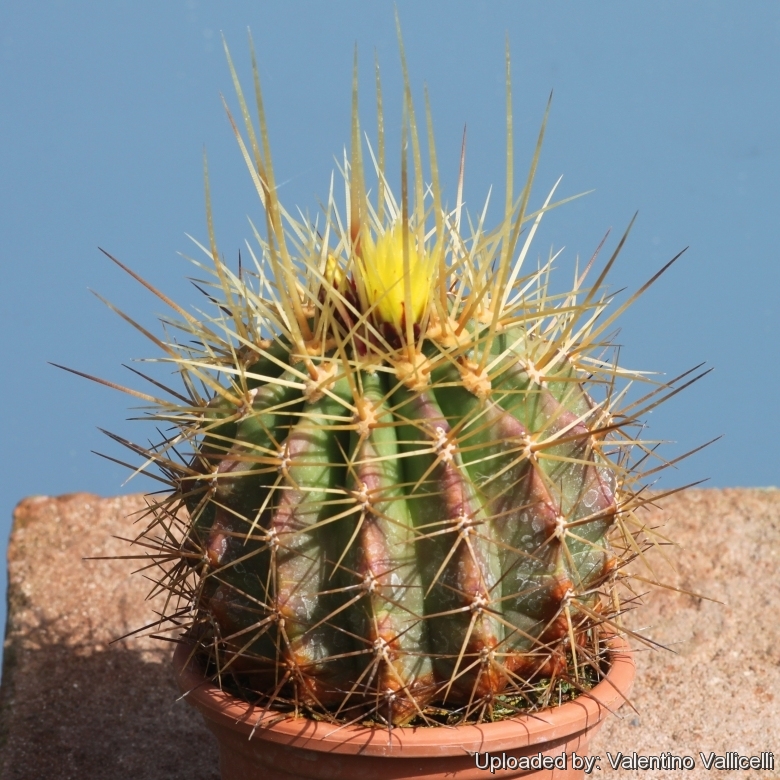
Parrycactus alamosanus subs. reppenhagenii (Ferocactus reppenhagenii) Photo by: Valentino Vallicelli
Origin and Habitat: It is found in the states of Colima, Michoacan, Guerrero (while the areas of distribution of the strictly related Ferocactus alamosanusSN|1694]]SN|1694]] in the state of Sonora is about 1000 km apart... ...a reason to accept the two taxa as different species)
Synonyms:
See all synonyms of Ferocactus reppenhagenii
Common Names include:
LITHUANIAN (Lietuvių): Repenhageno ferokaktusas
Description: Ferocactus reppenhagenii as old plants are of a small diameter, nearly cereoid growing with usually less than 13 ribs (while Ferocactus alamosoanus are large globular in appearance with many ribs (more than 20).
Stem: Shortly cylindrical up to 30 cm (but usually less) in diameter, 75 to 100 cm tall, occasionally much taller;
Ribs: 12-18 (rarely more than 13) Rounder than in Ferocactus alamosoanus.
Areoles: In old plants they are almost connected.
Spines: Needle-like, yellowish and densely intermeshed.
Central spine: 1, sometimes flattened, to 6 cm long;
Radial spines: 8 straw-coloured, 3 to 4 cm long .
Flowers: Greenish yellow, small and narrow 3-4 cm long, 3 cm in diameter the petals are lanceolate and acute
Fruits: Bright red and not splitting when ripe.
Subspecies, varieties, forms and cultivars of plants belonging to the Ferocactus pottsii complex
(This Taxon belong to a group of six closely allied species. The group is: Ferocactus alamosanus, Ferocactus schwarzii, Ferocactus reppenhagenii, Ferocactus glaucescens, & Ferocactus echidne)
Bibliography: Major references and further lectures
1) Edward Anderson “The Cactus family” Timber Press, Incorporated, 2001
2) James Cullen, Sabina G. Knees, H. Suzanne Cubey "The European Garden Flora Flowering Plants: A Manual for the Identification of Plants Cultivated in Europe, Both Out-of-Doors and Under Glass" Cambridge University Press, 11/Aug/2011
3) David R Hunt; Nigel P Taylor; Graham Charles; International Cactaceae Systematics Group. "The New Cactus Lexicon" dh books, 2006
4) N. L. Britton, J. N. Rose “The Cactaceae. Descriptions and Illustrations of Plants of the Cactus Family.” Volume 4, The Carnegie Institution of Washington, Washington 1923
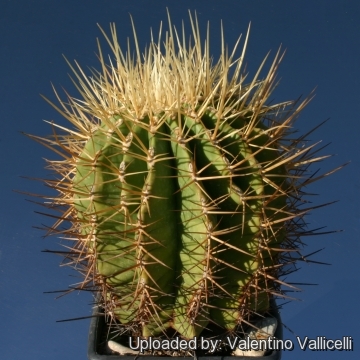 - A mature specimen . (Ferocactus reppenhagenii) Photo by: Valentino Vallicelli
- A mature specimen . (Ferocactus reppenhagenii) Photo by: Valentino Vallicelli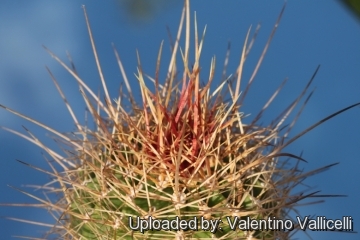 Parrycactus alamosanus subs. reppenhagenii (Ferocactus reppenhagenii) Photo by: Valentino Vallicelli
Parrycactus alamosanus subs. reppenhagenii (Ferocactus reppenhagenii) Photo by: Valentino Vallicelli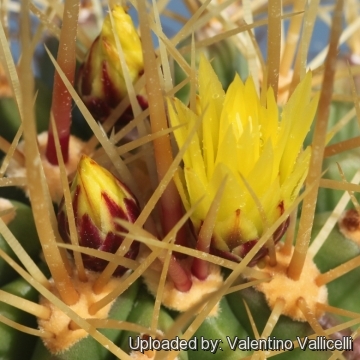 Parrycactus alamosanus subs. reppenhagenii (Ferocactus reppenhagenii) Photo by: Valentino Vallicelli
Parrycactus alamosanus subs. reppenhagenii (Ferocactus reppenhagenii) Photo by: Valentino Vallicelli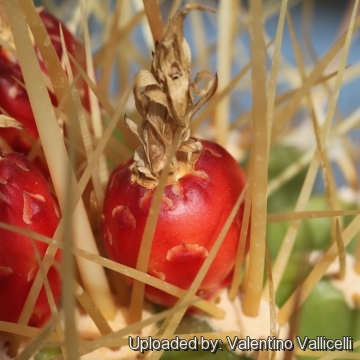 Parrycactus alamosanus subs. reppenhagenii (Ferocactus reppenhagenii) Photo by: Valentino Vallicelli
Parrycactus alamosanus subs. reppenhagenii (Ferocactus reppenhagenii) Photo by: Valentino Vallicelli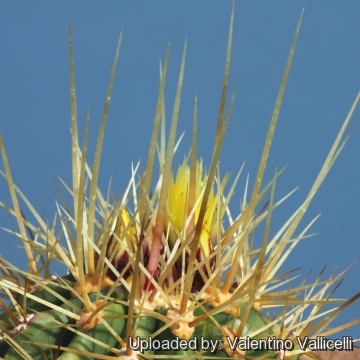 Parrycactus alamosanus subs. reppenhagenii (Ferocactus reppenhagenii) Photo by: Valentino Vallicelli
Parrycactus alamosanus subs. reppenhagenii (Ferocactus reppenhagenii) Photo by: Valentino Vallicelli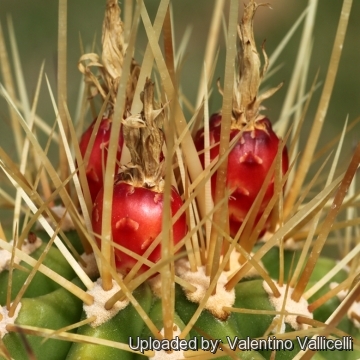 Parrycactus alamosanus subs. reppenhagenii (Ferocactus reppenhagenii) Photo by: Valentino Vallicelli
Parrycactus alamosanus subs. reppenhagenii (Ferocactus reppenhagenii) Photo by: Valentino Vallicelli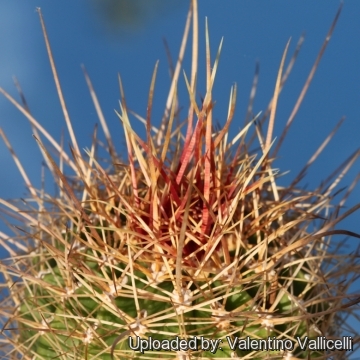 Parrycactus alamosanus subs. reppenhagenii (Ferocactus reppenhagenii) Photo by: Valentino Vallicelli
Parrycactus alamosanus subs. reppenhagenii (Ferocactus reppenhagenii) Photo by: Valentino Vallicelli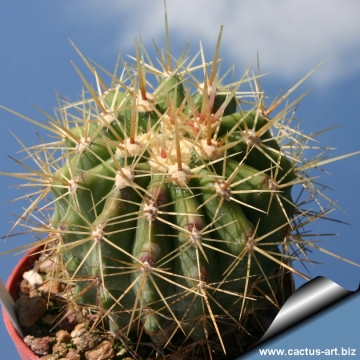 Parrycactus alamosanus subs. reppenhagenii (Ferocactus reppenhagenii) Photo by: Cactus Art
Parrycactus alamosanus subs. reppenhagenii (Ferocactus reppenhagenii) Photo by: Cactus ArtCultivation and Propagation: It is a summer-growing and pretty easy species thought slow to start. It is suited for any rich, well drained soil in full sun throughout the year. Water it during the aestival growth cycle (this plant need plenty of water) but be careful not to overwater and also needs to be avoided wetting the body of this plant while it is in sunlight. A wet cactus in the sun light can cause sun burning which can lead to scars or even fungal infections and death. In winter keep completely dry at 10°C, but can tolerate sporadic light frost. Plant in good conditions will start to bloom when reach the diameter of only 15-18 cm. It is apt to undergo attacks of red spiders if it is placed near fruit trees.
Propagation: Seeds are the only way of reproducing. Seed Collecting: Permit fruit to ripen. Fruit must be significantly overripe before harvesting seed; clean and dry seeds
Your Photos

by Cactus Art
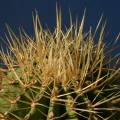
by Valentino Vallicelli
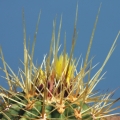
by Valentino Vallicelli
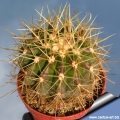
by Cactus Art






















